![Nono, Luigi: Seguente [2 CDs] (Edition Rz) Nono, Luigi: Seguente [2 CDs] (Edition Rz)](https://www.teuthida.com/productImages/misc4/19976.jpg)
Reissuing composer Luigi Nono's 1990 Edition Rz LP with the addition of 3 works, presenting 6 remarkable symphonic works combining live electronics and voice, intended to expand the technical possibilities of sound and the perceptive faculties of the listener.
Out of Stock
Quantity in Basket: None
Log In to use our Wish List
Shipping Weight: 8.00 units
Sample The Album:
Luigi Nono-composer, electronics
Michael Gielen-conductor
Sinfonieorchester des Sudwestfunks Baden-Baden-orchestra
Ciro Scarponi-contrabass
Hans Peter Haller-electronics
Roberto Fabbriciani-contrabass flute
Elisabeth Laurence-alto vocals
Susanne Otto-alto vocals
Christine Theuss-cello
Ciro Scarponi-clarinet
Roberto Cecconi-conductor
Stefano Scodanibbio-doublebass
Roberto Fabbriciani-flute
Giancarlo Schiaffini-tuba
Charlotte Giesebrecht-viola
Chor Des Bayerischen Rundfunks-choir
Ernest Bour-conductor
Margot Laminet-soprano vocals
Albert Gassner-tenor vocals
Solistenchor Freiburg-choir
Wiener Konzertchor-choir
Ingo Metzmacher-conductor
Andre Richard-electronics
Ensemble Modern-ensemble
Susanne Otto-mezzo-soprano vocals
Friedrich Goldmann-conductor
hr-Sinfonieorchester-orchestra
Click an artist name above to see in-stock items for that artist.
UPC: B00LN875KG
Label: Edition Rz
Catalog ID: ed. RZ 1031-32
Squidco Product Code: 19976
Format: 2 CDs
Condition: New
Released: 2014
Country: Germany
Packaging: Box w/ 2 CDs & Booklet
Recorded 1961Ð1995. Rerelease of ed. RZ 1004 LP plus three additional recordings. Sponsored by Berliner Knstlerprogramm des DAAD.
CD 1
A Carlo Scarpa for orchestra (Sinfonieorchester des SWF, M. Gielen)
A Pierre for bass flute, bass clarinet and live elektronics (R. Fabbriciani, C. Scarponi, Experimentalstudio des SWF)
Guai ai Gelidi Mostri for ensemble, voices and live elektronics (E. Laurence,S. Otto, C. Gieselbracht, Chr. Theus, R. Fabbriciani, C. Scarponi, St. Scodanibbio, Ltg. R. Cecconi, Experimentalstudio des SWF, H.P. Haller, sound director: L. Nono)
La terra e la compagna (Margot Laminet, Albert Gassner, Chor des Bayerischen Rundfunks, Symphonieorchester des Bayerischen Rundfunks, Ernest Bour)
CD 2
Caminantes ... Ayacucho (Susanne Otto, Wiener Konzertchor, Gottfried Rabl, Solistenchor Freiburg, Ensemble Modern Frankfurt, Ingo Metzmacher, Experimentalstudio der Heinrich-
Strobel-Stiftung des Südwestfunks Baden Baden, André Richard, Antonio Gomez, Rudolf Strauß)
No hay caminos, hay que caminar ... Andrej Tarkowsky für sieben Orchester-
gruppen (hr-Sinfonieorchester, Friedrich Goldmann)
Artist Biographies
• Show Bio for Luigi Nono "Luigi Nono, (born Jan. 29, 1924, Venice, Italy-died May 8, 1990, Venice), leading Italian composer of electronic, aleatory, and serial music. Nono began his musical studies in 1941 at the Venice Conservatory. He then studied law at the University of Padua, receiving a doctorate there, while at the same time studying with the prominent avant-garde composer Bruno Maderna and the noted conductor Hermann Scherchen. He came to public attention in 1950 with his work Variazioni Canoniche, orchestral variations on a 12-tone theme of Arnold Schoenberg, whose daughter Nuria he married in 1955. He continued to explore avant-garde techniques and lectured widely in Europe and the United States. He also taught at the New Music Summer School at the Kranichsteiner Music Institute in Darmstadt, Ger.. Nono's music is distinguished by its clarity of form. Polyphony (simultaneous melodic lines), monophony (melody without harmony), and rhythm are explored in a straightforward manner in his Polifonica-monodia-ritmica for seven instruments (1951). The Suspended Song (1955-56), a serial setting for voices, chorus, and orchestra of letters written by victims of Nazism, passes its melody among the instruments and voices with each performer rarely playing more than a single note at a time. Nono also adopted this technique of fragmentation in several works involving voices and percussion. Per Bastiana Tai-yang Cheng (1967), based on a Chinese folk song and celebrating the birth of the Nonos' daughter, is somewhat aleatoric and calls for three instrumental groups playing in quarter tones and for magnetic tape. An avowed Communist, Nono often produced works of political substance, many of which sparked controversy and reaction. When his opera Intolleranza 1960, which Nono referred to as a "mural," premiered in Venice in 1961, the performance was stormed by neofascists, causing a riot with the communists. The work attacked fascism, the atom bomb, and segregation and ended in a symbolic fashion in which the world is flooded and destroyed. The opera was later revised as Intolleranza 1970. La Scala in Milan commissioned a new opera from Nono in the early 1970s. Al Gran Sole Carico d'Amore (1972-75; "In the Great Sun of Blooming Love") took its title from a poem by Arthur Rimbaud, "Les Mains de Jeanne-Marie," and is about the Paris Commune of 1871. Its theme was devoted to the class struggle, with no conventional plot or characters, and showed the influence of Arnold Schoenberg's pre-World War I Expressionism. The opera did not, however, premier at La Scala but at Teatro Lirico. La Scala produced a revised version in 1978. Nono was greatly inspired by the Spanish poet Federico García Lorca and wrote Der Rote Mantel (1954; "The Red Overcoat") based on one of his poems. His Epitaffio per Federico García Lorca (1952) was hailed as a major work and is a set of three pieces in memory of Lorca. Other politically inspired works include the dramatic cantata Sul ponte di Hiroshima (1962; "On the Bridge of Hiroshima"), dealing with the implications of nuclear warfare; Ein Gespenst geht um in der Welt (1971; "A Spirit Haunts the World"), a setting for voice and orchestra of The Communist Manifesto; and Canto per il Vietnam (1973; "A Song for Vietnam"). A longtime member of the Italian Communist Party, Nono was elected to its Central Committee in 1975 and remained a member until his death. His later works include A Pierre: Dell'azzurro silenzio, inquietum for bass flute, contrabass clarinet, and live electronics (1985) and No hay caminos, hay que caminar, a tribute to the director Andrey Tarkovsky, for orchestra (1987)." ^ Hide Bio for Luigi Nono • Show Bio for Giancarlo Schiaffini "Giancarlo Schiaffini: composer, trombonist, tubist, born in Rome in 1942. He studies in Rome at regular public school, choosing classical address in the high school, and graduates in 1960. 1957: starts studying trumpet, switching two years later to trombone, composition and arrangement as self-taught. 1960: starts studying Physics at the University of Rome, where he graduates in 1965 discussing a work in Biophysics about "Physical and Chemical Analysis on Hybrids between DNA and RNA of Bacillus Megatherium". In the meanwhile, he plays jazz and appears as soloist in the first free-jazz concerts in Italy, in Gruppo Romano Free Jazz with Mario Schiano, Marcello Melis and Franco Pecori. Subsequently presents his own compositions and arrangements widely in the mid 1960's. In the same time he introduces himself into the "contemporary music" scene in Italy, in that time very lively and intriguing, soon becoming an outstanding performer, improviser and composer. 1966: plays as stage musician (tuba) in the Musical "Ciao, Rudy!", by Garinei-Giovannini-Trovaioli, starring Marcello Mastroianni. Later in the same year he starts working in a Transistor Factory held by Siemens, to develop first samples of Integrated Circuits. 1967: changes job to CNEN (National Committee for Nuclear Energy) in the Nuclear Studies Center in Casaccia (near Rome), as a Biophysicist, publishing on "The International Journal of Immunology", later working on the effect of radiations on Nucleic Acids in bacteria until 1975. 1968: plays in a Big Band with Lionel Hampton in Rome. 1970: He studies at Darmstadter Ferienkurse with Karlheinz Stockhausen, Gyorgy Ligeti and Vinko Globokar. In the same year he founds, with the composer/contrabass player Bruno Tommaso and the composer/clarinetist Jesùs Villa-Rojo, the chamber ensemble Nuove Forme Sonore, to explore the structural combinations between composition and improvisation in contemporary music. 1972: studies electronic music at Accademia di Santa Cecilia with Franco Evangelisti, and becomes member of the Gruppo di Improvvisazione di Nuova Consonanza (with Franco Evangelisti, Ennio Morricone, Egisto Macchi, Giovanni Piazza, Antonello Neri) until 1983. 1973: records the first LP leading his own group (a sextet) for the series "Jazz a confronto". From 1973 to 1975 he writes music for short movies. 1974: founds the Gruppo Romano di Ottoni performing Renaissance and Contemporary music. Since the same year, the association Nuove Forme Sonore, born with the chamber ensemble in 1970, is awarded a annual Grant from the Italian Government, to perform contemporary music concerts in Italy and abroad; tours Japan with a band playing sound tracks by M° Rustichelli. 1975: leaves his work on Physics and starts teaching Trumpet and Trombone at the Conservatory "Gioacchino Rossini" in Pesaro. In the same year he premieres "Tre pezzi per trombone solo" by Giacinto Scelsi, and collaborates with John Cage during his Italian Tour. 1976: is among the founders of first Italian Popular Music School in Testaccio (borough of Rome). 1977: Plays with Globe Unity Orchestra in Modena (Festival dell'Unità) 1978: Performs in Reggio Emilia in English-Italian Impro Meeting (with Paul Rutherford, Evan Parker, Barry Guy). 1979: Plays in concert With ICPO led by Misha Mengelberg in Soncino; the concert is issued in LP (later in CD). With Alex Von Schlippenbach, Evan Parker and Paul Lovens plays as guest soloist with Italian Radio Big Band. 1980: composes the first of a long series of multimedia pieces ("I sette corvi", from Grimm's fairy tale, for instruments, tape and live images); changes Conservatory (from Pesaro to the Conservatory "A. Casella" in l'Aquila). Plays in concert at Teatro dell'Opera di Roma with Bill Higgins, Albert Mangelsdorff and Manfred Schoof, with Big Band of Italian Radio, presenting new compositions. Plays with Globe Unity Orchestra in Saalfelden. Writes a treatise about improving technique and expression for trombone in contemporary music, published by Ricordi (Milan). Since 1980, for ten years, he cooperates with composer Luigi Nono, as one of the soloists of his last great compositions (Guai ai gelidi mostri, Omaggio a Kurtag, Prometeo, Risonanze erranti, Post-Prae-Ludium per Donau). 1981: invited by the Centre for Contemporary Italian Culture, plays at New York University and gives lessons about compositions of G. Scelsi, L. Berio and improvisation, cooperating with D. Ghezzo and B. Fennelly. 1982: composes his second multimedia piece on fairy tale "L'usignolo dell'Imperatore", for trombone, tape and live images and premieres it at Farnese Castle in Genazzano; returns to NewYork University for concerts at Lincoln Center and lectures; leads for one month the Radio production "Il mestiere del musicista", broadcasted by RAI (Italian National Radio). 1983: gives a lecture about brass instruments at Musik Hochschule in Freiburs im Breisgau (Germany); premieres Luigi Nono's "Omaggio a Kurtag", in Maggio Musicale Fiorentino, in Florence, and starts working with live electronics at Heinrich Stroebel Stiftung of Süd West Funk in Freiburg im Breisgau (Germany); starts teaching at Siena Jazz International Summer School. 1984: premieres "Guai ai gelidi mostri" in Baden-Baden and the opera "Prometeo" by Luigi Nono at Biennale Musica di Venezia. Plays with Roberto Laneri's Group at Yatra Jazz Festival in Bombay. Composes music and plays for the theatre piece "Pentesilea" (from Kleist) by Gianfranco Quartucci at Hebbel Theatre in Berlin. 1985: plays revised version of "Prometeo" by L. Nono at Teatro alla Scala (Milan). 1986: premieres "Risonanze erranti" by L. Nono in Köln (West Deutsche Rundfunk). Records the LP " Infernal Dream" for Tuba and live electronics at H. Strobel Studio in Freiburg i. B. and "Well Actually" for Splasch in duo with singer Tiziana Ghiglioni; is the producer for a Radio Series of New Music compositions. Composes music for ballet "REM", ccoreographer Luisa Gay. 1987: plays "Prometeo" at Alte Oper, Frankfurt a. M. and at Festival d'Automne in Paris, Theatre de Chaillot; premieres in Donaueschingen "Post-Prae-Ludium per Donau", for tuba and live electronics, dedicated to him by Luigi Nono 1988: composes "Tautovox", chamber opera for soprano, alto, trombone, live electronics and images (text by Pasquale Santoli, images by Alfredo Profeta); composes "Musica Edulis", extended piece for trombone and live electronics (commission of Festival di Nuova Musica di Fiastra); plays at Milanopoesia Festival with singer Silvia Schiavoni and live electronics, starting a long cooperation in composition and performances. Plays at Luigi Nono Festival inaugurating the Kleine Philarmonie in Berlin. 1989: seminar in Villeneuve d'Avignon about the music of Luigi Nono. 1990: plays solo concerts in Mexico DC dedicated to Giacinto Scelsi; cooperates with John Cage in Erlangen (Cage Festival); is a co-founder of the Italian Instabile Orchestra, including the best Italian soloists and improvisers, which will become one of the most important band of this kind in the world. 1991: Records a CD in solo for RCA, dedicated to New Music for Trombone. Plays "Prometeo" By L. Nono in Gibellina; flies to Melbourne for concerts and clinics at Melba University and Monash University; composes "Tuba Libre" for Big Band (commission of Italian Instabile Orchestra). 1992: composes "Cambio di rotta", for soprano, instruments, live electronics and images, for the anniversary of the Discovery of America (Text by P. Santoli, images by Ilaria Schiaffini and Marina Bindella); records the CD "About Monk" with his Nonet. 1993: Composes "Snow over Ireland" with Silvia Schiavoni for voice, trombone and live electronics, first piece of the suite "Dubs", based on Joyce's "Dubliners", which will be recorded on CD (YVP) in 1997. 1994: composes "Là les nuites sont toutes belles" (text by Silvia Schiavoni) and "Descend sur la terre" (Text by P. Santoli), multimedia operas with live electronics and multivision images by I. Schiaffini and M. Bindella and premieres them at Acquario Romano; second tour to India for Yatra Jazz Festival, with his Quintet. With this group records the CD "As a Bird", dedicated to Charlie Parker; records as well "Edula", for trombone and live electronics. Is invited by UNEAC for seminar and concerts in Cuba. Invited in Amsterdam as guest trombonist, conductor and composer by Instant Composers Pool Orchestra (led by Misha Mengelberg), with Henry Threadgill for a short tour in Holland and Belgium. Composes soundtrack for "Nosferatu" by Murnau, to be performed live in tour with a vocal/instrumental ensemble. 1995: invited again in Cuba; writes "Energico, rarefatto, vivo" for harpsichord.. Performs all Nono pieces in a Festival held in Lisbon at Gulbenkian Foundation. Performs Nono's music at Hunter College (New York City) in a concert dedicated tu 100 Years of Hertz Waves, led by Luciano Berio. Composes a piece for 5 marching bands to be performed in Pollenza (Macerata) 1996: Composes music for Choir for a ballet in Modena, coreographer Teri Weikel, and for the coreographer Ugo Pitozzi, in Bolzano; co-ordinates and plays a profile of Luigi Nono, for New Music Concerts (Toronto). Starts a cooperation with Luca di Volo and Claudia Bombardella on Klezmer Music. 1997: composes "Litania Sibilante" (commission of the Instabile's Festival in Pisa); records the suite "Dubs", with text by Silvia Schiavoni based on James Joyce's "Dubliners", for voice, instruments and electronics, published by YVP (Germany), "Tuba Libre", for tuba and live electronics, (Random Acoustics, Munich) and "The Missing Chainring" for trombone and electronics for the new label "Imprint Records". 1998: resident composer and performer (Trombone, Tuba, Electronics) at Upic Centre in Paris, with final concert at Cité des Sciences; composes music for the ballet "Pinocchio", choreography by Karole Armitage (commission of Maggio Musicale Fiorentino). 1999: writes the sound-track for the film "Tartarughe dal becco d'ascia"; composes music for concert band (commission by MM&T, Milan); plays Improvised Music in Chicago (Empty Bottle Festival), Jazz in DC (with Peter Fraize Trio), Contemporary Improvised and electronic music at NYU Composers Forum (New York University); with singer Silvia Schiavoni composes "Rhapsody for Billie", dedicated to Billie Holiday, for voice, Baritone Horn, tape. 2000: is composer in residence at International Composers & Improvisers Forum in Munich, premiering "Concerto Grasso", for orchestra; composes for Italian Radio (RAI) "La grande porta delle pulci" (electro-acoustic piece), and tours Italy with Thurston Moore (guitar, Sonic Youth) and Walter Prati (cello, el. bass)-this tour is recorded for Auditorium; tours Canada with Italian Instabile Orchestra, which wins the Down Beat Poll, Big Bands TDWR; plays with Italian Instabile Orchestra in Europe Festival in Ruvo, guest soloist and composer Cecil Taylor; is invited by SKRAEP for concerts of improvised music in Copenhagen; composes a piece for crossing marching bands (commission by Cagli City Council); starts co-operation with Riccardo Santoboni in Myth Ensemble, founded by Dinu Ghezzo, for improvised electro-acoustic music; with Bruno Tommaso and Alfredo Profeta founds the independent CD label Imprint Records, and publishes "The Missing Chain-ring", for trombone and live electronics. 2001: composes and plays a series of live sound tracks for silent movies in Rome and Toronto (Cinemathèque Ontario); composes "Parata", based on Erik Satie's "Parade", for the "On the road Festival", commissioned by City Council of Pelago (Florence), for 11 musicians with ethnic players and dancers; sonorization of the Castle of Genazzano (Rome), commissioned by City Council of Genazzano; tours Japan with Italian Instabile Orchestra. 2002: plays at Banlieue Bleues Festival (Paris) with Italian Instabile and Cecil Taylor; gives two seminars at Third University in Rome about Luigi Nono's Music and his own production using improvisation and electronics; records CD and tours with "Rhapsody for Billie", with images by I. Schiaffini, in Toronto, Los Angeles and San Francisco, with great success; composes "Suoni per la pace" for a 15 instruments group, special guest Charlie Mariano, commissioned by "On the Road Festival" in Pelago (Florence); realizes Wassilij Kandinski music score for "Il suono giallo" (the Yellow Sound), commission of the Amiternum Festival in l'Aquila, in a version for dance, music, video and light designing; composes "Simm' nervusi" for the Instabile's Festival in Pisa, for 12 players and a visual installation of the artist Enzo Cucchi; plays at Improv Festival in Washington DC; seminar at George Washington University on Jazz composition; presents the CD "Post Deconstruction", published by Cadence (New York) and recorded with Peter Fraize Group in 2000 in Washington DC; composes the chamber opera "Common Sense" for voices, trombones and electronics (text by P. Santoli), and premieres it in Rome. 2003: tours with Italian Instabile Orchestra all around Germany, Holland, Switzerland, Denmark, Norway; seminar at Conservatorio di Piacenza about improvisation techniques in Jazz and Contemporary Music. Composes for Italian Instabile Orchestra a sound track for Abel Gance's cult silent movie "Napoleon", performed in Giardini Scotto in Pisa (Commission of Provincia di Pisa).Plays at Sant'Anna Arresi (Sardinia) with Cecil Taylor and Italian Instabile Orchestra; performs Hommage to Luigi Nono in Antwerp and Bruxelles (Belgium). Composes a multimedia piece based on novels by Italian Writer Niccolò Ammaniti, text elaborated by Silvia Schiavoni, images by Ilaria Schiaffini, and with this show tours USA and Canada with great success (San Francisco, Los Angeles, Washington DC, Chicago, Toronto, Vancouver), performs multimedia "Rhapsody for Billie" at Loewe Auditorium in New York University. 2004: Performs an hommage to Italian composers Berio, Scelsi and Nono in Bogotà. Plays in Vancouver with Evan Parker and Walter Prati. Tours Colombia (Barranquilla, Bucaramanga, Bogotà) with the multimedia piece on Ammaniti. Tours with Italian Instabile in Spain and Germany. Composes a new multimedia piece about Umberto Boccioni (With Silvia Schiavoni and Ilaria Schiaffini) and performes it in San Francisco (Berkeley), Los Angeles and Rome. Composes new pieces for Great Wind Band to be performed for the Parmafrontiere Festival. 2005: tours Switzerland Austria and Germany with chamber piece "Ianus" by Swiss composer Daniel Studer. Plays an hommage to Giacinto Scelsi with Silvia Schiavoni (voice) and Walter Prati (cello & electronics) in Toronto, San Francisco, Bogotà, Milan and Rome. In Colombia organizes and participates to a great concert/event in the Catedral del Sal in Zipaquirà (an old mine converted to a cathedral) with soloists from Italy and Colombia. This last concert will be recorded and issues as a CD by Auditorium. Tours with Italian Instabile Orchestra in Canada (Toronto and Vancouver) and Italy. With Silvia Schiavoni and Dick Halligan founds "Cat's Pajamas!", dedicated to up-to-date performance of American Songs from the twenties to fifties. Performs with Silvia Schiavoni the multimedia piece (images by Ilaria Schiaffini) about The futurist Umberto Boccioni in Guanajuato-Festival Cervantino (Mexico), Teatro Colon and Universidad Nacional (Bogotà). Composes and conducts "Quanto Domani Luce", text by Schiavoni, images by Ilaria Schiaffini, at Lozano Auditorium with a Colombian chamber ensemble. Performs in Roma (Controindicazioni) with John Tilbury and Eddie Prevost. In November tours England (Leeds, Basingstoke, Manchester, Oxford, London/ Purcell Hall) with Italian Instabile Orchestra. The London Concert has been recorded by BBC and will be issued as a CD. Composes and performs music for ballet for Virgilio Sieni's Company. 2006: Records a CD (imprint IM 009) with Schiavoni and Halligan (Cat's Pajamas!: Zenone's Paradox): SplascH publishes a CD with first concert of Phantabrass, awarded as the best Italian Group in Musica Jazz Poll. Premieres a composition dedicated to Ibsen in Oslo at Nasjonalbiblioteket, text by S. Schiavoni and images by I. Schiaffini Composes "Como una candelilla", (text by S. Schiavoni) commissioned by Mazda Foundation and Italian Cultural Institute, for voices, instruments and images (by I. Schiaffini), and premieres it in Bogotà at Lozano Auditorium. 2007: Casa del Jazz in Rome dedicates him a 3-days-profile (duo with S. Schiavoni, duo with S. Tramontana, Phantabrass Ensemble). Composes and premieres in Milan at Piccolo Teatro a revision of "Three Pennies Opera" (Brecht-Weill) for Big Band, Combo and voice (Tiziana Ghiglioni), commissioned by Musica Oggi. Presents in Lugo a series of new arrangements of G. Gershwin's songs for Silvia Schiavoni and Phantabrass. Premieres his composition for Big band for the 500th Anniversary of Architect Barozzi, commissioned by Festival Jazz in It (Vignola). Premieres a composition dedicated to Edvard Grieg in Oslo at Nasjonalbiblioteket, text by S. Schiavoni and images by I. Schiaffini. Selected in the Category "European Legend of Jazz" for Eurodjango (Eurojazz Awards). 2008: Composes and premieres a new work inspired to Renaissance Composer Luzzasco Luzzaschi (Commission of Ferrara Conservatory). Continues and presents the complete series of arrangements of G. Gershwin's songs for Silvia Schiavoni and Phantabrass, performing all around Italy and recording a CD for Imprint. For the University of Tor Vergata (Rome) composes and performs a "Haec Ego" (text by Silvia Schiavoni, images by Ilaria Schiaffini) and a version of 3 parts of "Tierkreis" K. Stockhausen). In Buenos Aires Plays L. Nono (1st time in Argentina) and premieres at Teatro Coliseum "A cento metri comincia il bosco", multimedia opera, text and voice by Silvia Schiavoni. The same piece, in a version for Voice + Brass Ensemble, is performed at Mittelfest, in Cividale del Friuli. Starts working with Giorgio Baratta and Silvia Schiavoni with new compositions from philosopher Antonio Gramsci's work. 2009: Plays as a soloist in the opera buffa "Uma vaca flatterzunge" by Vitor Rua at Culturgest in Lisbon. Presents "Ho veduto volare" for "La notte dei Musei a Roma" in a new version for images, voice, tape + Phantabrass orchestra. The same piece, in duo version, is performed in Torviscosa (UD), Piedigrotta Festival (Napoli), Rio de Janeiro, San Paolo, Thessaloniki, Bucarest. Starts working with Parco della Musica Contemporary Ensemble (PMCE) on the project about Futurism "Uccidiamo il chiaro di luna", performing in Munich, Bratislava, Amsterdam (Bimhuis), Buenos Aires and Bahìa Blanca. Composes the Musical "Giove a Pompei. La vera storia", inspired to Umberto Giordano, commissioned by Orsara Festival and performed in Orsara and Pietra Montecorvino. Plays music by Luigi Nono and Adriano Guarnieri in Guanajuato (Mexico. Festival Cervantino). Composes "Guardando nella faccia della luna. Canto di Galileo", text by Silvia Schiavoni, performed in Buenos Aires and La Plata. 2010: Plays as soloist with Cosimo Cinieri in "Viandando qui e altrove" (poetry and music) in Rome Auditorium and Tel Aviv.. Performs "Ho veduto volare" in duo and "L'immagine di te sempre nel cuore", songs and poems from Liguria, In Buenos Aires. Plays in a new project by Enzo Favata "Os caminhos de Garibaldi na America". With Schiavoni, Trovalusci, Ruggeri works at a project about Predrag Matvejević "Cantare il pane" and performs it in Zagreb and Opatija. 2011: Tours widely with "Os caminhos de Garibaldi na America" and "Cantare il pane" projects. Performs as conductor at XXIX Rassegna di Nuova Musica in Macerata and in Ferrara. Plays multimedial piece about writer Niccolò Ammaniti in Slovenia. Writes a book about improvisation ("E non chiamatelo jazz" for Auditoium Edizioni-Milan). 2012: Plays at ICTUS Festival in NYC at The Stone. Tour in Switzerland with Daniel Studer et al. Conducts Italian Instabile Orchestra in Bari in a project for Europe Jazz Network 25th. Organizes a triple concert for John Cage with Goethe Institut Rom and Romaeuropa Festival with Tilbury, Schiavoni, Prevost, Brand and others." ^ Hide Bio for Giancarlo Schiaffini
11/5/2024
Have a better biography or biography source? Please Contact Us so that we can update this biography.
11/5/2024
Have a better biography or biography source? Please Contact Us so that we can update this biography.
Track Listing:
CD 1
1. A Carlo Scarpa, architetto, ai suoi infiniti possibili 9:44
2. A Pierre. Dell'azurro silenzio, inquietum 8:39
3. Guai ai geldi mostri 30:32
4. La terra e la compagna 7:45
CD 2
1. Caminantes...Ayacucho 35:40
2. No Hay Caminos, Hay Que caminar...Andrej Tarkowskij 25:40
Compositional Forms
Avant-Garde
Electro-Acoustic
Search for other titles on the label:
Edition Rz.


![Nono, Luigi: Seguente [2 CDs] (Edition Rz) Nono, Luigi: Seguente [2 CDs] (Edition Rz)](https://www.teuthida.com/productImages/full/19976.Full.jpg)






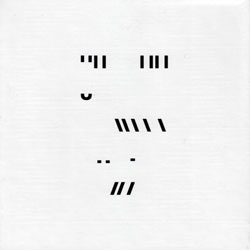
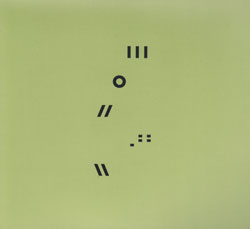
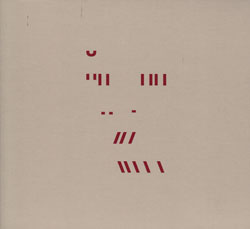
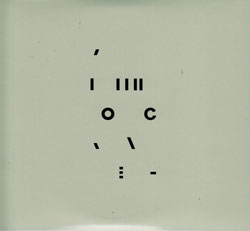
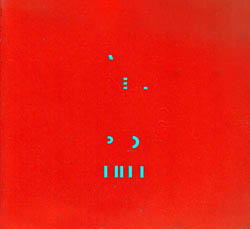
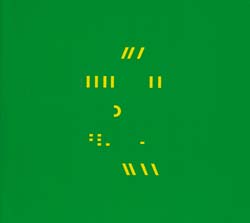
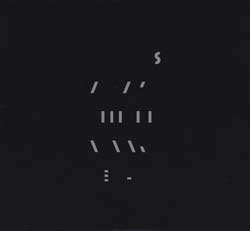
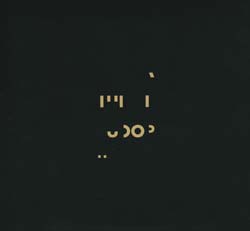
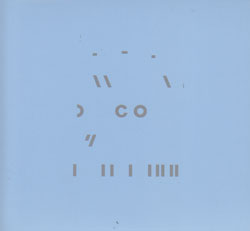
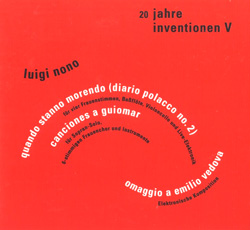
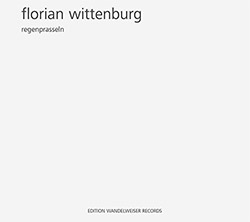

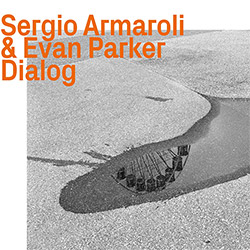
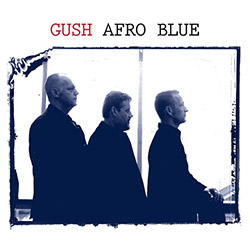

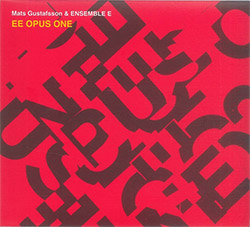



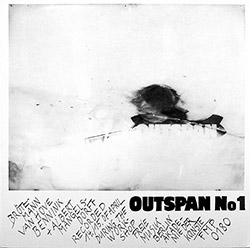





![Warren, Kenny (Warren / Hoffman / Ellman): Sweet World [VINYL]](https://www.teuthida.com/productImages/misc4/35451.jpg)


![Blake, Ran / Dave Knife Fabris: Live Amsterdam 2006, First Visit [CD + POSTCARDS]](https://www.teuthida.com/productImages/misc4/35275.jpg)
![Sanna, Claudio: Compositori Sardi Contemporanei II [2 CDs]](https://www.teuthida.com/productImages/misc4/35317.jpg)














![Musicworks Magazine: #149 Fall 2024 [MAGAZINE + CD]](https://www.teuthida.com/productImages/misc4/35470.jpg)

![Nevai, Nandor: <<The PRICE of FRONTIER>> Book 1: FULK [BOOK + 4 CDs]](https://www.teuthida.com/productImages/misc4/35464.jpg)
![Nevai, Nandor: <<The PRICE of FRONTIER>> Book 2: MARTIAL [BOOK + 4 CDs]](https://www.teuthida.com/productImages/misc4/35465.jpg)
![Nevai, Nandor: <<The PRICE of FRONTIER>> Book 3: JASSOM [BOOK + 4 CDs]](https://www.teuthida.com/productImages/misc4/35466.jpg)
![Nevai, Nandor: <<The PRICE of FRONTIER>> Book 4: HARD-WON [BOOK + 4 CDs]](https://www.teuthida.com/productImages/misc4/35467.jpg)

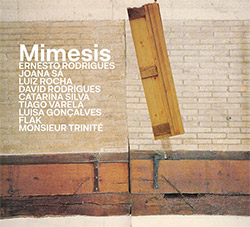

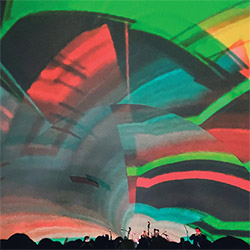
![Mazurek, Rob & Exploding Star Orchestra: Live at Adler Planetarium [VINYL]](https://www.teuthida.com/productImages/misc4/35233.jpg)
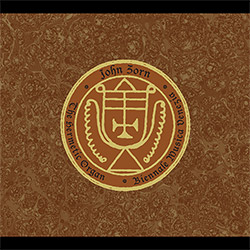
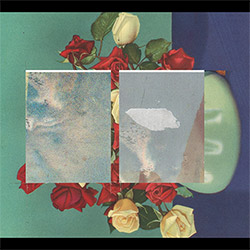
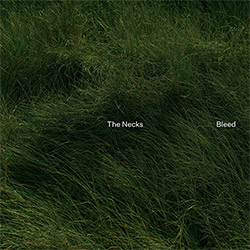
![Necks, The: Bleed [VINYL BLACK]](https://www.teuthida.com/productImages/misc4/35250.jpg)
![Necks, The: Bleed [VINYL GREEN + DOWNLOAD]](https://www.teuthida.com/productImages/misc4/35251.jpg)
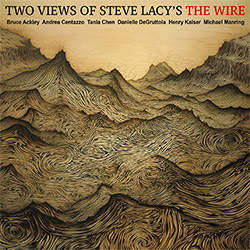

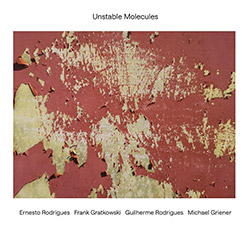

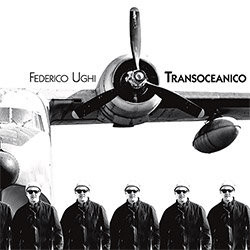
![Attias, Michael (Attias / Leibson / Pavolka / Ferber / Hoffman): Quartet Music Vol. I: LuMiSong [VINYL]](https://www.teuthida.com/productImages/misc4/34878.jpg)
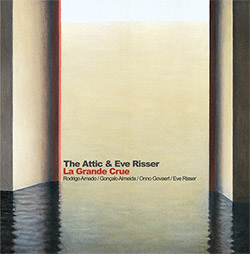
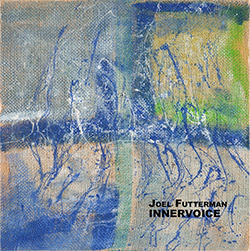



![DNS: Taking Big Bites Of The Khandas Three Cafes Deep [2 CDs]](https://www.teuthida.com/productImages/misc4/35334.jpg)




![Cleaver, Gerald: The Process [VINYL]](https://www.teuthida.com/productImages/misc4/34966.jpg)




![Alva Noto: HYbr:ID II [VINYL 2 LPs]](https://www.teuthida.com/productImages/misc4/35201.jpg)

![Baron, Derek / Luke Martin: Distinct and Concealed [CASSETTE + DOWNLOAD]](https://www.teuthida.com/productImages/misc4/35079.jpg)

![Lyle, Erica Dawn : Colonial Motels [CASSETTE + DOWNLOAD]](https://www.teuthida.com/productImages/misc4/35080.jpg)







![Alva Noto: HYbr:ID III [VINYL 2 LPs]](https://www.teuthida.com/productImages/misc4/35011.jpg)
![Kubisch, Christina / Trondheim Voices: Stromsanger 2022 For Six Voices And Electromagnetic Waves [VINYL]](https://www.teuthida.com/productImages/misc4/34628.jpg)
![Ristic, Manja / Joana Guerra / Veronica Cerrotta: Slani pejzazi [CASSETTE + DOWNLOAD]](https://www.teuthida.com/productImages/misc4/34928.jpg)
![Euro Herc: Segnali [CASSETTE + DOWNLOAD]](https://www.teuthida.com/productImages/misc4/34929.jpg)







![Zurria, Manuel: Fame di Vento [3 CDs]](https://www.teuthida.com/productImages/misc4/35167.jpg)

![Granberg, Magnus / Nattens Inbrott / Skogen: Holde Traume, Kehret Wieder! [2 CDs]](https://www.teuthida.com/productImages/misc4/35038.jpg)
![Frey, Jurg: Outermost Melodie [2 CDs]](https://www.teuthida.com/productImages/misc4/35039.jpg)

![Pavone, Jessica: Reverse Bloom [VINYL]](https://www.teuthida.com/productImages/misc4/34895.jpg)




![Modney (Modney / Wooley / Gentile / Roberts / Pluta / Symthe / ...): Ascending Primes [2 CDs]](https://www.teuthida.com/productImages/misc4/34852.jpg)







![Kirschner, Kenneth / Joseph Branciforte: From the Machine: Volume 1 [VINYL]](https://www.teuthida.com/productImages/misc4/30767.jpg)

![Elephant9 with Terje Rypdal: Catching Fire [VINYL 2 LPs]](https://www.teuthida.com/productImages/misc4/35355.jpg)
![Deerlady (Obomsawin, Mali / Magdalena Abrego): Greatest Hits [VINYL]](https://www.teuthida.com/productImages/misc4/34876.jpg)




![Haino, Keiji: Black Blues [2 CDs]](https://www.teuthida.com/productImages/misc4/35109.jpg)



![Surplus 1980: Illusion of Consistency [CD]](https://www.teuthida.com/productImages/misc4/35069.jpg)
![Staiano, Moe: Away Towards the Light [VINYL + DOWNLOAD]](https://www.teuthida.com/productImages/misc4/35037.jpg)
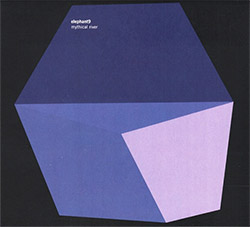



![Caveira (Gomes / Sousa / Abras / Ferrandini): Ficar Vivo [VINYL]](https://www.teuthida.com/productImages/misc4/34643.jpg)
![Gregg, J. J. / David Van Auken: Lunar Prairie [CD w/ DOWNLOAD]](https://www.teuthida.com/productImages/misc4/34611.jpg)

![Coultrain: Mundus [VINYL]](https://www.teuthida.com/productImages/misc4/32439.jpg)
![Mattin: Songbook #6 [VINYL]](https://www.teuthida.com/productImages/misc4/27317.jpg)
![Punkappella: Wake Up [7-inch VINYL]](https://www.teuthida.com/productImages/misc4/17519.jpg)
![Residents, The: WARNING: UNiNC.: Live And Experimental Recordings 1971-1972 [VINYL 2 LPs]](https://www.teuthida.com/productImages/misc4/31521.jpg)
![Coultrain: Phantasmagoria [VINYL]](https://www.teuthida.com/productImages/misc4/30142.jpg)
![Lennon, Sean Ono: Asterisms [VINYL]](https://www.teuthida.com/productImages/misc4/34517.jpg)

![Rotem Geffen: The Night Is The Night [VINYL]](https://www.teuthida.com/productImages/misc4/34631.jpg)
![Coley, Byron: Dating Tips for Touring Bands [VINYL]](https://www.teuthida.com/productImages/misc4/17906.jpg)

![Lost Kisses: My Life is Sad & Funny [DVD]](https://www.teuthida.com/productImages/misc4/lostKissesDVD.jpg)